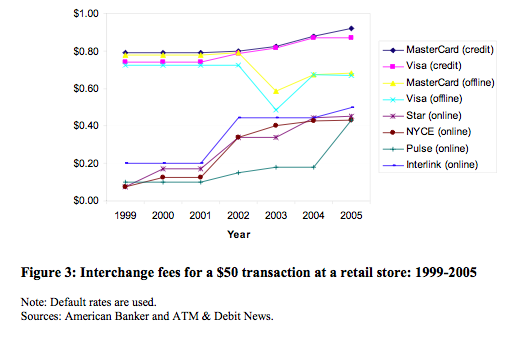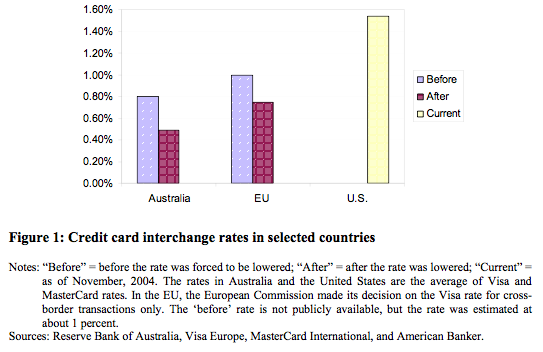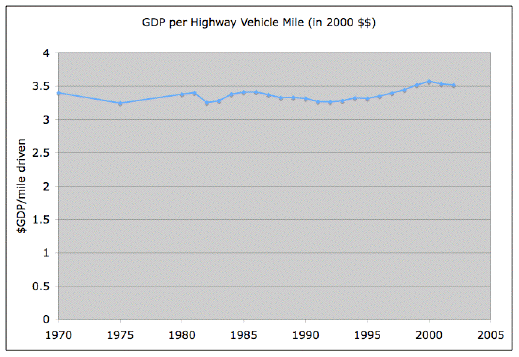Paul English is peeved about what a pain in the neck it is to buy a membership in a health club. He asks “Why the sleaze?”
Here are some theories:
- Low barrier to entry means too many health clubs; i.e. excess supply, leading to sleazy marketing practices as they desperately attempt to survive.
- Lack of consumer protection laws or enforcement removes the only effective negative feedback on the sleaze.
- Testosterone and steroids.
- The subscription pricing models (i.e. lock-in and upfront discounting) is sleazy out of the gate, it’s all down hill from there.
- Clubs that adopt aggressive value pricing are more sustainable than those that don’t. The more aggressive the more sleazy.
- Matching price/user to cost/user is impossible, all attempts to do so look and often are sleazy.
Clubs are the text book response to the standard list of problems with of public goods, e.g. overcrowding, under provisioning, free-riding, etc. It’s fascinating that in this example the club doesn’t resolve those problems; it just reframes them. The presumption is that once you are allowed into the club you will find a world where facilities and services are abundant and collegial; i.e. you will enter a world where the facilities are now a public good. You won’t be excluded and there won’t be rivalry. The water in the pool will be warm and you won’t have to double up in the lanes when you swim. Piles of towels will be close at hand. The exercise equipment will be standing by and dependible when you need it.
Most of the health clubs I’ve experienced fail to achieve the eden like fantasy. They are under provisioned and overcrowded at the hours when I would show up. Interestingly the lanes in the pool would be occupied by people who used them for hours every day, in effect free-riding on the membership contributions of people like me.
These clubs have terrible pricing problems. They would like to charge people for the value they extract from their facilities, including the value of reducing their guilt by having a membership even if they don’t use it. Of course they don’t mind if they over charge. The more they can push their prices up toward that goal the better the facilities they can provide will be. That’s all reasonably virtuous.
I have a bad feeling that the distribution of load imposed by the customers is power-law in shape; but the willingness to pay isn’t. Which is why on the high end you get the heavy user free-loading illustrated above. On the low end you get a long tail of users who are charged far more than they will ever consume in services. The entire thing’s a mess.
I have noticed that some very high end hotels have health clubs that don’t suffer from these problems. They, presumably, are subsidized by the hotel’s guests. In a few cases they even sell a reasonably priced membership in a transparent fashion.
The YMCA is a good special case. As a not for profit they can do their value pricing by using needs based analysis. Their prices are clearly stated on a sheet of paper at the front counter. At the bottom of the sheet it invites you to speak with them if you can’t afford the price they are offering. At the same time solicit donations from the better off members of their community. It’s interesting how this doesn’t suffer from the sleaze problem. It also means that when you gain entrance to the club and the public good isn’t as wonderful as you might hope your reaction isn’t that you have been mislead, but rather that a group of good people are doing the best they can with limited resources. Which, if your well off, might lead you to donate.
At the same time the Y’s model for how to fund the club doesn’t resolve some of the problems outlined above. They still have some members who draw off 100 times more services than others – i.e. free loaders. And the club are always a bit under provisioned, the water a bit chilly, the equipment a a bit run down. The community is generally very convivial; particularly if it makes you happy to see hordes of elderly and children using the club around you.
The private health clubs have eroded some of the communities common cause around the Y. That has weakened the Y as an institution. For example the Y wasn’t able to raise money to build a new branch in downtown Boston recently.


